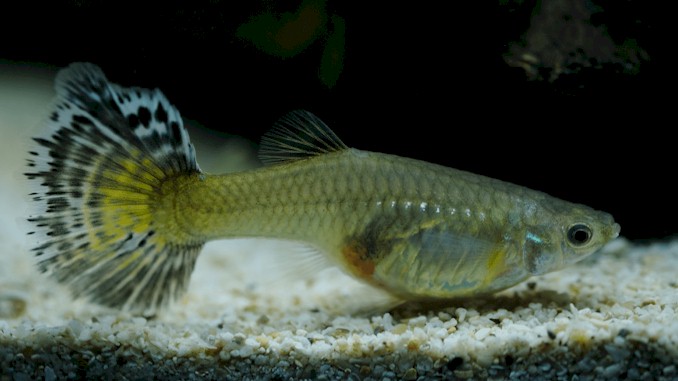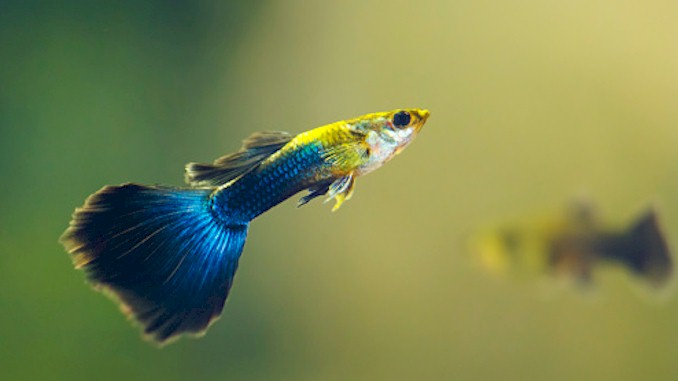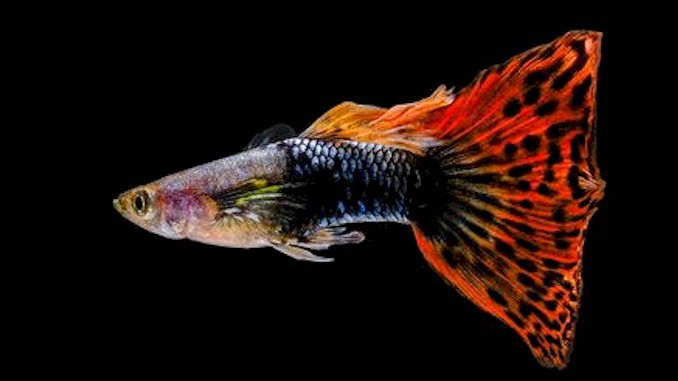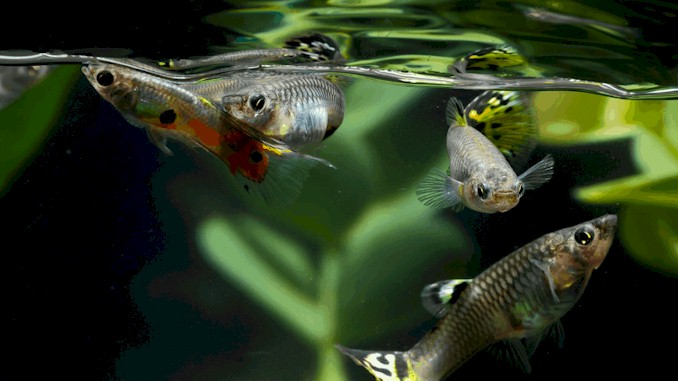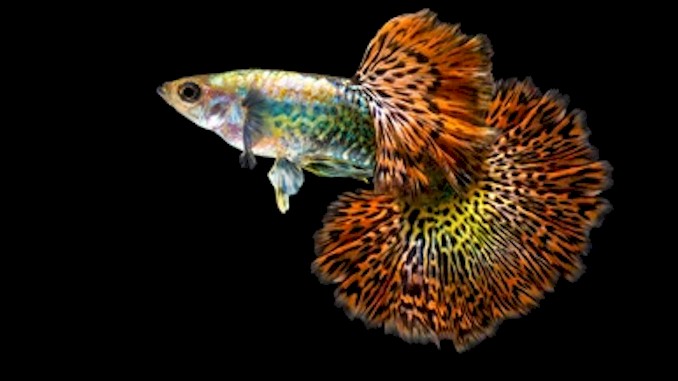Solving the Mystery of Guppies at the Bottom
As a guppy owner, I have gained a lot of unexpected knowledge. One day, I noticed that one of my guppies was lying motionless at the bottom of the tank for an extended period, and I became concerned. I immediately turned to Google for answers, and through my research, I learned about the possible reasons why guppies might exhibit this behavior and how to address it. I want to share my newfound knowledge with you so that you don’t have to spend as much time researching as I did.
A guppy lying on the bottom of the tank could be due to stress, illness, water quality issues, or even old age. Stress factors may include overcrowding, sudden changes in water temperature or pH levels, or aggressive tank mates. Illnesses such as swim bladder disease or bacterial infections can also cause guppies to sink to the bottom.
Now that you know some of the potential reasons why your guppy might be laying on the bottom of the tank, it’s important to understand how to address the issue and prevent it from recurring in the future. In the rest of this post, I’ll describe some practical tips on how to diagnose and treat various conditions that may be affecting your guppy, as well as strategies for creating a healthy and stress-free environment for your fish. By the end of this post, you’ll have a better understanding of how to ensure the well-being of your guppy and maintain a thriving aquarium.
How to Determine the Cause of Your Guppy’s Behavior?
So you have noticed that your guppy is lying on the bottom of the tank and begin to worry. Before you take any actions to deal with it. The first thing is to determine the cause that makes your guppy be like that. This requires a careful assessment of your guppy’s environment, behavior, and physical condition. Here are some steps you can take to determine the cause of your guppy’s behavior:
Observe Your Guppy’s Behavior
The first step in identifying the cause of your guppy’s behavior is to observe it closely. Take note of how long it spends at the bottom of the tank, whether it’s swimming erratically or displaying any other unusual behaviors. Also, keep an eye on its appetite, breathing, and overall appearance. Any changes in these factors can indicate a problem.
Check the Water Quality
Poor water quality is one of the most common causes of guppy illness and stress. To ensure your guppy is in good health, test the water parameters regularly, including temperature, pH, ammonia, nitrite, and nitrate levels. If any of these parameters are outside the optimal range, it can be stressful for your guppy and affect its behavior.
Look for Signs of Illness
Several illnesses can cause a guppy to lay on the bottom of the tank, including swim bladder disease, fin rot, and dropsy. Look for any visible signs of illness, such as abnormal coloration, frayed fins, or bloating. If you suspect your guppy is sick, quarantine it immediately and seek veterinary advice.
Evaluate the Tank Environment
Guppies are sensitive to changes in their environment, so it’s essential to ensure the tank is suitable for their needs. Check the tank size, filtration, lighting, and decorations, as well as the number and compatibility of tank mates. Overcrowding and aggressive tank mates can cause stress and affect your guppy’s behavior.
Consider the Guppy’s Age and Genetics
Finally, keep in mind that guppies have a lifespan of around two years and may experience age-related health issues. In addition, some strains of guppies are more prone to certain illnesses or deformities than others. If your guppy is displaying unusual behavior and you’ve ruled out other causes, genetics or old age may be a factor.
As you see, determining the cause of your guppy’s behavior requires careful observation, testing, and evaluation of its environment, health, and genetics. By taking these steps, you’ll be able to identify the underlying issue and take appropriate measures to address it. Remember, a healthy and happy guppy is a joy to watch and care for.
How to Address Stress Factors Affecting Your Guppy?
Another reason that may cause your guppy to lie on the bottom of the bottom is stress. Stress is a common factor that can affect your guppy’s behavior, immune system, and overall health. Stressful conditions can result from several factors, including poor water quality, overcrowding, aggressive tank mates, and inappropriate tank conditions. Here are some steps you can take to address stress factors affecting your guppy:
Maintain Optimal Water Quality
Optimal water quality is critical to your guppy’s health and well-being. Ensure that the water temperature, pH, ammonia, nitrite, and nitrate levels are within the optimal range for your guppy. Regular water changes, adequate filtration, and appropriate cleaning routines are essential to maintaining optimal water quality.
Reduce Overcrowding
Overcrowding can cause stress and lead to territorial disputes and aggression among tank mates. To prevent overcrowding, ensure that the tank size is suitable for the number and size of fish you have. As a rule of thumb, provide at least one gallon of water per inch of fish. Additionally, avoid adding too many fish at once, as this can disrupt the established social hierarchy in the tank.
Choose Suitable Tank Mates
The compatibility of your guppy’s tank mates can significantly affect its stress levels. Avoid adding aggressive or predatory species that may harass or harm your guppy. Instead, choose peaceful and compatible species that share similar water and dietary requirements.
Provide Adequate Hiding Spots
Hiding spots provide a sense of security and reduce stress levels in your guppy. Ensure that your tank has adequate hiding spots, such as plants, rocks, or decorations, where your guppy can retreat when feeling threatened or stressed.
Reduce Noise and Vibrations
Loud noises and vibrations can cause stress in your guppy. Avoid placing the tank near sources of noise or vibrations, such as speakers or appliances. Additionally, avoid tapping or knocking on the tank, as this can startle and stress your guppy.
Monitor Your Guppy’s Behavior
Finally, observe your guppy’s behavior regularly to identify any signs of stress or illness. Common signs of stress include a loss of appetite, erratic swimming, and hiding for extended periods. If you notice any of these signs, take appropriate measures to address the underlying cause.
So if you want to take some actions to address stress factors affecting your guppy. It requires a proactive approach to its environment, tank mates, and behavior. By maintaining optimal water quality, reducing overcrowding, choosing suitable tank mates, providing hiding spots, reducing noise and vibrations, and monitoring your guppy’s behavior, you can help reduce its stress levels and ensure its well-being.
How to Diagnose and Treat Swim Bladder Disease in Guppies?
Your guppy lying on the bottom of the tank may be due to Swim Bladder disease. Swim bladder disease is a common condition that affects guppies and can lead to difficulty swimming or floating on one side. The swim bladder is a gas-filled organ that helps fish control their buoyancy and maintain their position in the water column. When the swim bladder becomes damaged or infected, it can result in swim bladder disease. Here are some steps you can take to diagnose and treat swim bladder disease in your guppy:
Diagnosing Swim Bladder Disease
The first step in diagnosing swim bladder disease in your guppy is to observe its behavior. Guppies with swim bladder disease may have difficulty swimming or floating on one side, swim upside down, or have trouble reaching the surface for air. Additionally, they may display a loss of appetite, lethargy, or other signs of distress.
To confirm the diagnosis, you may need to perform a physical examination of your guppy. Gently hold your guppy upside down and observe its belly for any signs of swelling or redness. If you notice any abnormalities, your guppy may have a swim bladder infection or blockage.
Treating Swim Bladder Disease
The treatment for swim bladder disease depends on the underlying cause of the condition. Here are some common treatments that may help your guppy recover:
Antibiotics
If your guppy has a swim bladder infection, your veterinarian may prescribe antibiotics to treat the infection. Be sure to follow the dosage and administration instructions carefully.
Fasting
In some cases, fasting for a day or two may help relieve constipation or blockages that are causing swim bladder disease. After the fast, gradually reintroduce a high-fiber diet to help prevent further blockages.
Epsom Salt Baths
Epsom salt baths may help reduce swelling and inflammation in the swim bladder. Mix one tablespoon of Epsom salt per gallon of water and soak your guppy in the solution for 10-15 minutes.
Surgery
In severe cases, surgery may be necessary to remove blockages or repair damage to the swim bladder. This is a last resort option and should only be considered under the guidance of a veterinarian.
Preventing Swim Bladder Disease
Preventing swim bladder disease in your guppy is essential to its long-term health and well-being. Here are some steps you can take to prevent swim bladder disease:
Maintain Optimal Water Quality
Optimal water quality is critical to preventing swim bladder disease in your guppy. Ensure that the water temperature, pH, ammonia, nitrite, and nitrate levels are within the optimal range for your guppy. Regular water changes, adequate filtration, and appropriate cleaning routines are essential to maintaining optimal water quality.
Provide a Balanced Diet
A balanced diet is essential to your guppy’s overall health and well-being. Ensure that your guppy’s diet contains a variety of high-quality proteins, fibers, and nutrients. Avoid overfeeding, as this can lead to constipation and other digestive issues.
Avoid Overcrowding
Overcrowding can cause stress and lead to territorial disputes and aggression among tank mates. To prevent overcrowding, ensure that the tank size is suitable for the number and size of fish you have. As a rule of thumb, provide at least one gallon of water per inch of fish. Additionally, avoid adding too many fish at once, as this can disrupt the established social hierarchy in the tank.
As you see, when it’s time to deal with swim bladder disease, it would be a challenging condition to diagnose and treat in guppies. By observing your guppy’s behavior, performing a physical examination, and following appropriate treatments, you can help your guppy recover. Additionally, by maintaining optimal water quality, providing a balanced diet, and avoiding
What to do if your guppy is suffering from a bacterial infection?
As you have learned above, your guppies lying on the bottom may because of being sick, like bacterial infections. Bacterial infections are one of the most common causes of guppy diseases. They can affect different parts of your guppy’s body, such as the fins, tail, mouth, eyes, and internal organs. Some of the most common bacterial infections in guppies are:
- Fin rot or tail rot: This is a condition where the fins and tail of your guppy start to disintegrate and shred due to bacteria. It can also be caused by a fungus that grows on the damaged fins. Fin rot or tail rot can be triggered by poor water quality, stress, overcrowding, or aggression from other fish.
- Tuberculosis: This is a rare but serious infection that affects your guppy’s internal organs and bones. It is caused by a type of bacteria called Mycobacterium marinum. Tuberculosis can cause weight loss, loss of appetite, bloating, ulcers, deformities, and death in guppies. It can also infect humans through skin contact with infected water or fish.
- Columnaris: This is an infection that affects your guppy’s skin and mouth. It is caused by a type of bacteria called Flavobacterium columnare. Columnaris can cause white patches or lesions on your guppy’s body and mouth that look like cotton wool. It can also cause breathing difficulties, lethargy, and death in guppies.
If you suspect that your guppy has a bacterial infection, you should act quickly to prevent it from spreading to other fish or getting worse. Here are some steps you can take to treat your guppy:
- Isolate your infected guppy in a separate tank or quarantine container. This will prevent the bacteria from infecting other healthy fish in your main tank.
- Test and improve the water quality in both tanks. Bacteria thrive in dirty water with high levels of ammonia, nitrite, nitrate, and organic waste1. You should perform regular water changes (at least 25% weekly) and use a good filter system to keep the water clean and clear. You should also check the pH level (6.8-7.8), temperature (24-28°C), and hardness (10-20 dGH) of the water and adjust them if needed.
- Add aquarium salt to both tanks. Salt can help reduce stress and inflammation in your guppy’s body. You should add 1 teaspoon of salt per gallon of water (or follow the instructions on the package) and dissolve it well before adding it to the tank.
- Add antibiotics or antibacterial medications to both tanks. These can help kill the bacteria causing the infection in your guppy. You should follow the dosage and directions on the label carefully and complete the full course of treatment. Some common antibiotics or antibacterial medications for guppies are:
- Tetracycline: This is effective against fin rot, tuberculosis, columnaris, popeye (eye infection), dropsy (internal organ infection), septicemia (blood infection), etc.
- Erythromycin: This is effective against fin rot, columnaris,
- Furan-2: This is effective against fin rot,
- Kanamycin: This is effective against tuberculosis,
- Maracyn 2: This is effective against columnaris,
You should consult your veterinarian or pet store staff before using any medication for your guppy.
- Monitor your guppy’s condition closely during treatment. You should look for signs of improvement such as healing fins, reduced lesions, increased appetite, and normal behavior. You should also look for signs of worsening such as bleeding, swelling, ulcers, gasping, or death. If your guppy shows no improvement or gets worse after a few days of treatment, you may need to change the medication or seek professional help.
- Return your guppy to the main tank only after it is fully cured. You should make sure that your guppy has no signs of infection and that the water quality in both tanks is optimal before reintroducing it to the main tank. You should also acclimate your guppy gradually to avoid shock and stress.
Bacterial infections can be fatal for your guppy if left untreated. However, with proper care and treatment, you can save your guppy and prevent future outbreaks. Remember to always keep your tank clean and healthy and watch out for any signs of illness in your guppies.
How to create a healthy and stress-free environment for your guppy?
Certainly, you want to ensure that your guppies do not lie on the bottom of the tank due to illness. What you have to do is creating a healthy and stress-free environment for your guppies. It is essential for the well-being of your guppy. Here are some tips to help you create the best possible living conditions for your fish:
- Tank Size: Make sure your tank is big enough to accommodate your guppies. The minimum tank size for a small group of guppies is 10 gallons. A larger tank will provide more swimming space and help to dilute waste products, which can reduce stress on your fish.
- Water Quality: Maintaining good water quality is essential for the health of your guppy. Perform regular water changes, test the water for ammonia, nitrite, and nitrate levels, and keep the pH stable. If your water quality is poor, your guppy can become stressed and more susceptible to disease.
- Filtration: Proper filtration is critical to maintaining good water quality. A filter should be rated for at least twice the volume of your tank and should be cleaned or replaced regularly to ensure it is functioning properly.
- Lighting: Guppies require a regular day and night cycle to maintain their natural rhythms. Aim for 8-12 hours of light per day, and provide your guppies with a variety of hiding places and plants to help reduce stress.
- Temperature: Guppies are tropical fish and require a water temperature between 75-82°F. Use a heater to maintain a consistent temperature, and avoid drastic temperature changes, which can cause stress and illness.
- Tank Mates: When choosing tank mates for your guppies, select peaceful fish that are compatible with their needs. Avoid aggressive or territorial fish, which can cause stress and injury.
- Feeding: Offer your guppies a balanced diet that includes a variety of foods, such as flakes, pellets, frozen or live foods. Feed them small amounts several times a day to prevent overfeeding and reduce waste.
By following these tips, you can create a healthy and stress-free environment for your guppy, which will help to reduce the risk of illness and ensure that your fish thrives. Remember to monitor your guppy’s behavior and appearance regularly to catch any potential problems early on. With proper care and attention, your guppy can live a long and happy life in your aquarium.
Related Questions:
Do guppies sleep on the bottom of the tank? Guppies do not actually sleep in the same way that humans or other animals do. However, they may rest at the bottom of the tank for short periods of time. This behavior is usually not a cause for concern unless the guppy is consistently lying at the bottom of the tank and showing signs of distress or illness. In such cases, it is important to identify the underlying cause and take appropriate measures to address it.
Why does new guppy laying on bottom of tank? A new guppy may lie on the bottom of the tank due to several reasons, such as stress from transportation, acclimation to new water conditions, or bullying from other fish in the tank. In some cases, a new guppy may also be sick or infected with a parasite. It’s essential to observe the new guppy’s behavior closely and monitor any additional symptoms such as lethargy, loss of appetite, or abnormal swimming patterns. If the behavior persists, it’s recommended to test the water quality, check for signs of illness, and isolate the guppy if necessary.
Why is my female guppy laying on the bottom of the tank? There are several reasons why a female guppy may lay on the bottom of the tank, including stress, illness, pregnancy, or the need for rest. If the guppy is pregnant, it may lie on the bottom of the tank to conserve energy before giving birth. If the guppy is sick, it may display additional symptoms such as lethargy, loss of appetite, or discoloration. Stress from poor water quality or bullying from other fish in the tank can also cause a female guppy to lie on the bottom. It’s crucial to observe the guppy’s behavior and monitor any additional symptoms closely. If the behavior persists, it’s recommended to test the water quality and consult with a veterinarian if necessary.

